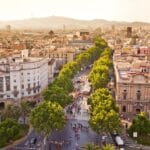Most of us have childhood memories of going to a magic show. The magician would astound us by sawing people in half, escaping seemingly perilous situations, or making things disappear and reappear at will. And when asked how they did it, they would give us a wink and say, “A magician never reveals his secrets!”
We often have a similar mindset when it comes to our health and wellness products, especially CBD. But we aren’t kids at a magic show anymore. And you can—and should— peek behind the curtain to see how your favorite CBD oils are extracted from hemp. These are the different hemp extraction methods explained.
Steam Distillation
If you are looking for a method that has been tested and approved for thousands of years, look no further than steam distillation. If you are a fan of extracting your own essential oils, then chances are you are already familiar with the steam distillation method of extraction. But many people don’t know that you can use the same method to get CBD oil from hemp.
For this method, you place hemp in a container above boiling water. As the steam rises, it separates the oil from the plants in the form of vapor, which gets captured by a tube. From there, the oil is distilled, leaving you with CBD. While reliable, this method isn’t very efficient, so people have come to rely on other methods.
Solvent Extraction
These days, one of the most common hemp extraction methods involves soaking the hemp in a solvent. The solvent dissolves the plant waxes to extract the cannabidiol and chlorophyll from the matrix. The substance is filtered so the solvent can be reused, and the chlorophyll is separated out. This leaves you with concentrated CBD—quickly and cheaply. Some common solvents include:
- Butane
- Propane
- Isopropyl
- Hydrocarbon
- Ethyl alcohol (Ethanol)
The one caveat of this type of extraction is that the solvents are flammable. Because of this, most manufacturers stick with the least flammable option, ethanol.
Supercritical CO2 Extraction
Sometimes, extraction can feel like a mad science experiment. And this is never truer than with supercritical CO2 extraction. In nature, carbon dioxide is a gas. However, when used in extraction, it is forced into a state somewhere between gas and liquid. This is called a “supercritical” state.
As with ethanol extractions, the CO2 must pass through the plant matrix. But ethanol and CO2 extractions differ in that CO2 does not extract chlorophyll and doesn’t need additional filtration. However, this extraction type requires highly specialized machinery and training, making it challenging for first-time extractors.







